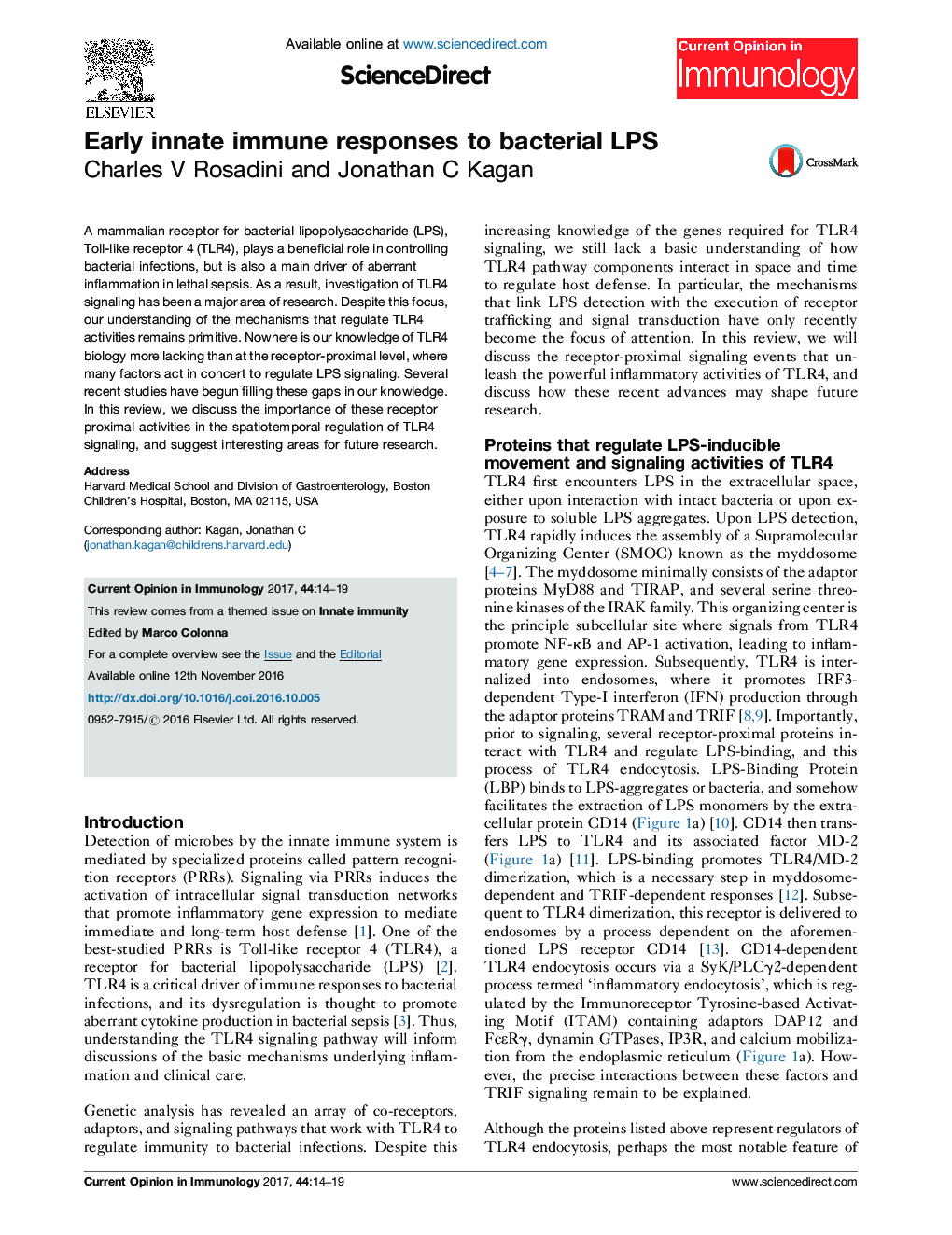| Article ID | Journal | Published Year | Pages | File Type |
|---|---|---|---|---|
| 5665767 | Current Opinion in Immunology | 2017 | 6 Pages |
â¢MD-2 and CD14 regulate the transport and signaling functions of TLR4.â¢LPS-induced CD14 aggregation modulates PIP5K activity to promote myddosome signaling downstream of TLR4.â¢Pathogenic and commensal bacteria modulate LPS structures to evade CD14 and MD-2 functions.
A mammalian receptor for bacterial lipopolysaccharide (LPS), Toll-like receptor 4 (TLR4), plays a beneficial role in controlling bacterial infections, but is also a main driver of aberrant inflammation in lethal sepsis. As a result, investigation of TLR4 signaling has been a major area of research. Despite this focus, our understanding of the mechanisms that regulate TLR4 activities remains primitive. Nowhere is our knowledge of TLR4 biology more lacking than at the receptor-proximal level, where many factors act in concert to regulate LPS signaling. Several recent studies have begun filling these gaps in our knowledge. In this review, we discuss the importance of these receptor proximal activities in the spatiotemporal regulation of TLR4 signaling, and suggest interesting areas for future research.
